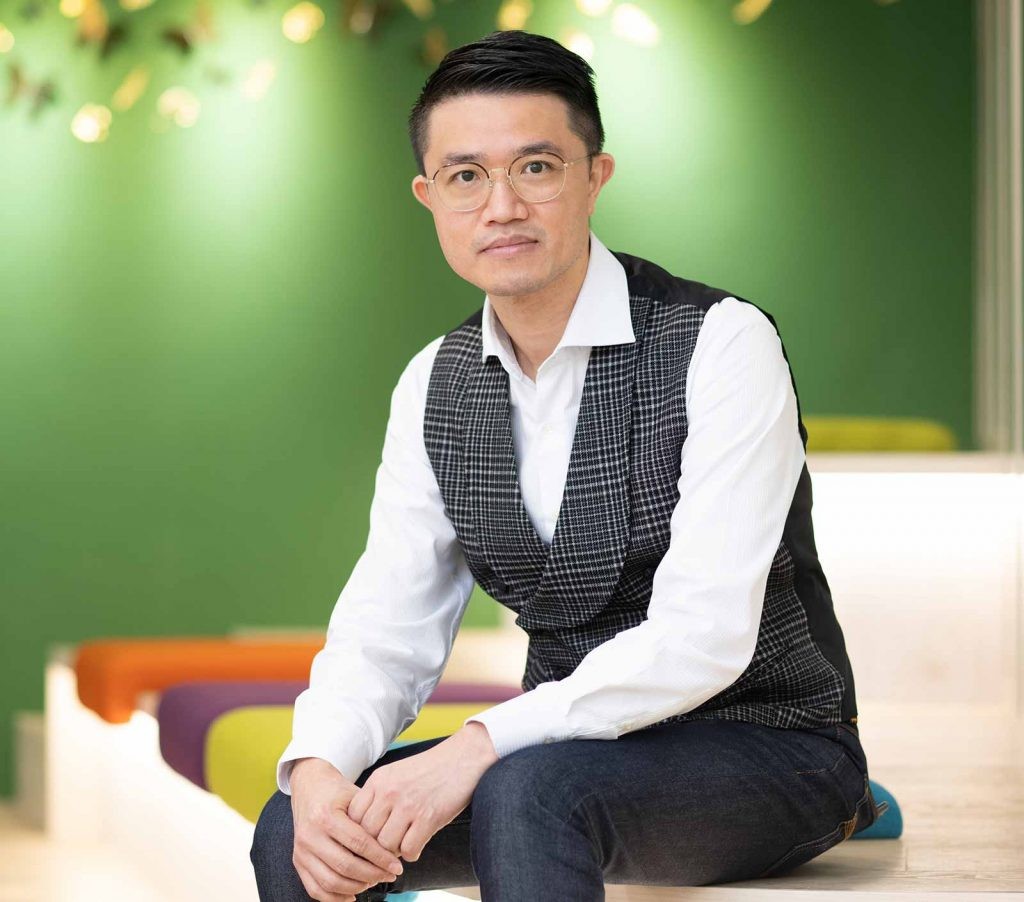
For Elvin Wong, joining National Gallery Singapore last January took him into a very different working environment. Yet the lessons he learned at the start of his career, working at fast-moving consumer goods multinational Procter & Gamble (P&G), still guide him today.
'If you align yourself with the direction and vision of an organisation, you will perform your finance function better'
National Gallery Singapore
2015
National Gallery Singapore opens in City Hall and former Supreme Court
64,000 sq. m
Size of museum
642,000
Number of visitors in 2020 – the 20th highest among museums globally
S$9.2m
Income, FY 2020/21
‘Even though I was in the finance department, I still took it upon myself to learn about different products, such as why a certain washing powder was thoughtfully designed to have less suds to make it easier for consumers who handwashed their clothes,' he says.
'If you align yourself with the direction and vision of an organisation, you will perform your finance function better.’
Social mission
As a national institution, the gallery – which houses the world’s largest public collection of South-East Asian modern art – is charged with increasing the appreciation of art and culture in Singapore, as well as strengthening the city-state's social fabric – for example, by promoting mental health through its programming.
It was this broader social mission that really connected with Wong. ‘I resonated with the mission and vision of the gallery, and I was eager to be a part of this iconic institution,' he says.
Close involvement
On joining the National Gallery, Wong set about learning as much as he could about the museum's operations, from the development of new exhibitions to the transportation of works around the world.
‘I talk to curators to learn about why they do certain things, such as how the time we ship the collection out can have an impact on the project’s cost,' he says.
Wong then developed a vision for restructuring the way the finance function operated. ‘Replacing the old P&L system, I started to reorganise our finances by project,' he explains. 'For each one, I set out the cost recovery, and then worked out the targets we needed to hit.’
Unlike some museums, which generate a substantial part of their income through ticket sales, the National Gallery works on a model that relies heavily on funding from the government and sponsorship partners, including Keppel Corporation, DBS Bank, United Overseas Bank, Ng Teng Fong Foundation, and Ngee Ann Kongsi, who offer support in a number of ways, including sponsoring exhibitions and community festivals. The current show, Ever Present, First Peoples Art of Australia, drawn from the collections of the National Gallery of Australia and Wesfarmers Collection of Australian Art, is supported by communications company Singtel.
'I recognised that I could benefit from the additional knowledge that comes with the ACCA Qualification'
CV
2022
Director of finance and administration, National Gallery Singapore
2021
Head of finance, Wealth Management Institute, Singapore
2017
Chief accountant/controller, INSEAD Asia campus, Singapore
2014
Entrepreneur and retail strategist, Corona Senses, Singapore/Malaysia
2012
Associate director, financial services, Singapore Management University
2011
Finance director, Reckitt Benckiser, mainland China
2006
Pricing manager, Dell China
2002
Regional FP&A finance manager, Procter & Gamble, Singapore
Pandemic challenges
Covid-19 posed a major challenge in working with corporate sponsors and overseas partners, due to restrictions in international travel. ‘Typically, companies will come to see venues before they commit to sponsorship,’ explains Wong, adding that, at the height of the pandemic, the gallery closed completely for several months.
During this challenging period, Wong and the finance team updated and planned budgets for different scenarios. ‘Our first priority was to keep our costs at an optimal level. While we were closed, some things needed to be kept running, and so we had to make decisions on which areas to prioritise,’ he says.
They also checked in regularly with the gallery’s tenants, including its restaurants and bars. ‘In addition to the government’s Rental Support Scheme, we also provided them with some of our own financial support,' he says. 'It was certainly a challenge, with corporates tightening their belts, but fortunately we had very good support coming from the government through the Arts and Culture Resilience Package.’
The gallery’s financial prudence has helped the institution to come close to its pre-pandemic visitor numbers. ‘Visitorship to our annual Light to Night Festival in January was even higher than usual because everyone was so eager to get out again,’ Wong says.
Crucial step
For Wong, gaining the ACCA Qualification was a crucial step in his career. 'Even though I already had a degree in finance, I recognised that I could benefit from the additional knowledge that comes with the qualification,' he says.
'The programme is robust and focused on fundamentals, and its quality is reflected not only in its recognition by employers, but also in how easily the concepts can be applied to real-world issues.’
Since qualifying in 2008, Wong has maintained his relationship with ACCA. ‘A couple of months back, I was invited to be a panellist to provide my perspective coming from a not-for-profit company,' he says. 'But the benefits are really two-way. Through ACCA, I’ve also been able keep myself updated with current and future trends such as ESG (environmental, social and governance).’
Deeper insight
To add to his understanding, Wong recently embarked on the University of London's MsC in professional accounting, which offers pathways for ACCA members. Wong explains that the degree has given him a deeper insight into topics such as sustainability and ESG standards.
Wong's enthusiasm for continuous learning is something that he tries to pass on to his staff. Fittingly, to illustrate his point he uses an art analogy.
‘My favourite exhibitions are those that feature many different mediums, such as paintings, sculptures and videos. In many ways, finance is like this,' he says. 'It’s not just about debit and credit; we need to combine the different parts that are ever changing.
'There are a lot of different and new aspects that are coming up such as NFTs and cryptocurrency. Like art, the lines are blurred, and we, as finance professionals, need to know how to cross over.’
'Capacity to learn means having a natural sense of curiosity, and at the same time showing initiative'

Beyond reward
Beyond his immediate sphere, Wong also takes an active interest in engaging with the next generation of finance professionals through various volunteering initiatives, such as ACCA’s advocacy programme. A piece of advice he often offers is to look beyond financial reward, especially in the early years of one’s career.
‘The training and grounding that you get during this period is crucial,' he says. 'Stick around, learn the nuts and bolts of how to set up a system, and build up your basics.’
While for those specifically looking to pursue a finance position in a non-profit organisation or arts institution, Wong says he looks for key attributes when hiring new staff.
‘I want to see that they are able to understand and identify with the mission and vision of the organisation. At the same time, I also want to see that they have a capacity to learn,' he says. 'For me, capacity to learn means having a natural sense of curiosity, and at the same time showing initiative in acquiring knowledge.
'If you can demonstrate yourself in these areas, you will have a better chance of success.’


